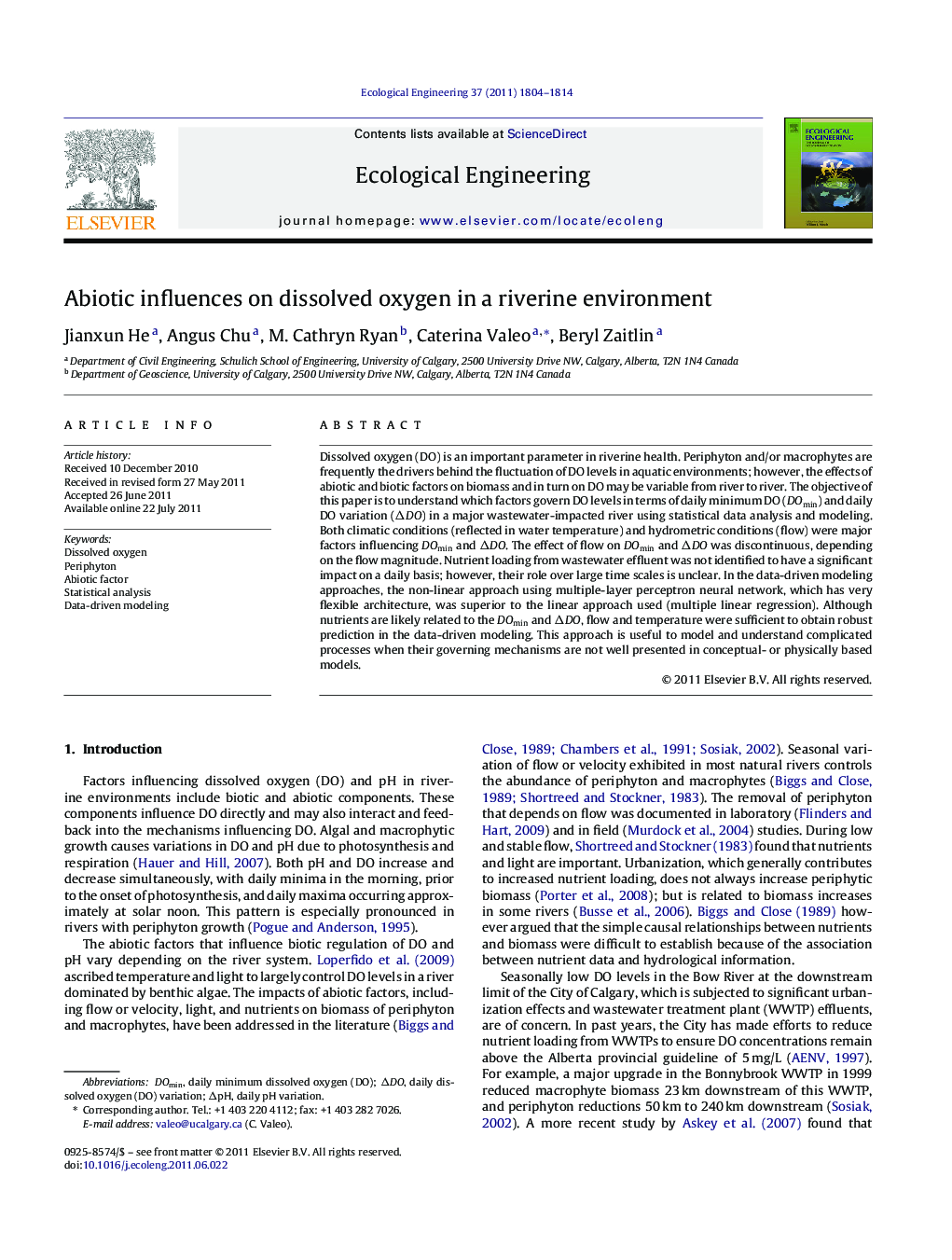| Article ID | Journal | Published Year | Pages | File Type |
|---|---|---|---|---|
| 4390132 | Ecological Engineering | 2011 | 11 Pages |
Dissolved oxygen (DO) is an important parameter in riverine health. Periphyton and/or macrophytes are frequently the drivers behind the fluctuation of DO levels in aquatic environments; however, the effects of abiotic and biotic factors on biomass and in turn on DO may be variable from river to river. The objective of this paper is to understand which factors govern DO levels in terms of daily minimum DO (DOmin) and daily DO variation (ΔDO) in a major wastewater-impacted river using statistical data analysis and modeling. Both climatic conditions (reflected in water temperature) and hydrometric conditions (flow) were major factors influencing DOmin and ΔDO. The effect of flow on DOmin and ΔDO was discontinuous, depending on the flow magnitude. Nutrient loading from wastewater effluent was not identified to have a significant impact on a daily basis; however, their role over large time scales is unclear. In the data-driven modeling approaches, the non-linear approach using multiple-layer perceptron neural network, which has very flexible architecture, was superior to the linear approach used (multiple linear regression). Although nutrients are likely related to the DOmin and ΔDO, flow and temperature were sufficient to obtain robust prediction in the data-driven modeling. This approach is useful to model and understand complicated processes when their governing mechanisms are not well presented in conceptual- or physically based models.
